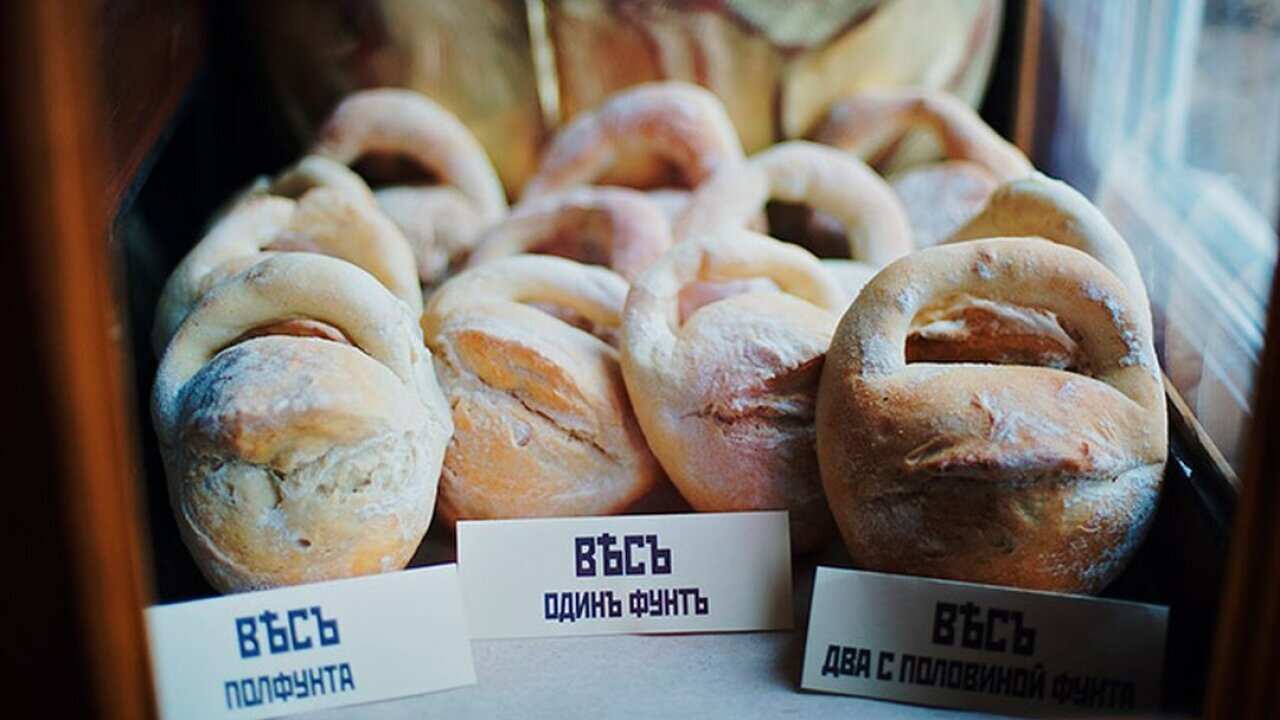When you think of Russian bread, no doubt the words dense, black, sour, rye and leavened all follow suit – and rightly so as many of the country’s mother loaves tick all of these boxes.
For most, life, luck and tradition are heavily intertwined with the breaking and gifting of bread. Take the of welcoming friends and gifting newlyweds simply with bread and salt - where the bread is said to represent a lavish table, and the salt a symbol of protection and safety.
It’s safe to say that not all flour is wielded equally and that each loaf has its own story to tell – and this particular story is all about kalach.
Kalach is a traditional Russian bread with a history that dates back centuries. It has had a place on the every-day table of regular townspeople as well as featuring as part of the extravagant and indulgent feasts of – who would share the loaf with special and favourable guests as an . Kalach is traditionally made with white flour that has been moulded into the shape of a ring, cylinder or in this instance, a padlock.
Many Slavic countries also have their own variation of this yeast-risen bread - Poland’s kolaczyki, Serbia's kolac as well as Slovenia's boznici kolac are just a few of the Slavic yeast-risen variations that also come to light here as does the taller, more cylindrical and festive Russian cousin the .
House of kalach
One-hundred kilometres southeast of Moscow is the Russian city of Kolomna, where the kalach heartbeat began.
Traditionally, the bread was shaped into a large padlock shape. As more homemade breadmaking practices have been revived, this is one particular loaf that has come full circle. So much so that Kolomna's local bakers are honouring and preserving the centuries-old-making tradition of baking kalach at the museum housed in a restored mid-19th-century monument and featuring a double-decked kiln heated with birch firewood - this is possibly the only museum that is (by the end of a day) completely empty of its exhibits.
The purpose of the museum is to showcase and educate about the history of kalach and the baking process in line with tradition. "From the preparation of hop ferment, the mixture of flour, the creation and cutting of the dough on the ice table - to baking and eating the kalach straight from the oven according to special rules, from the "roasted lip" to the warm crumb of the stomach," this is the complete experience, according to the .
Can you handle it?
There are three parts to understanding the kalach aesthetic - the lock, the lip and the handle.
The "lock” part of the bread is the softest, tastiest and largest part of the dough, perfect for eating. The lip, which is a small cut in the loaf, is for releasing steam upon baking, and the handle is the intriguing part of it all. While it may seem peculiar to "handle" your bread in this way, there have been many stories around its uses.
Some would either discard or give the handle to the less fortunate, while others chose not to eat the handle for , as kalach was said to be a street food favourite amongst certain professions who couldn't always wash their hands during their day-to-day, for example goldsmiths, and so the handle provided a sanitary barrier to the holy grail - the lock.
So when you bite into a kalach, know that your are tasting centuries of history.
With 32 years of experience, SBS is the only home of the FIFA World Cup™. Find out how you can watch all the matches on SBS and On Demand. #WeAllSpeakFootball





